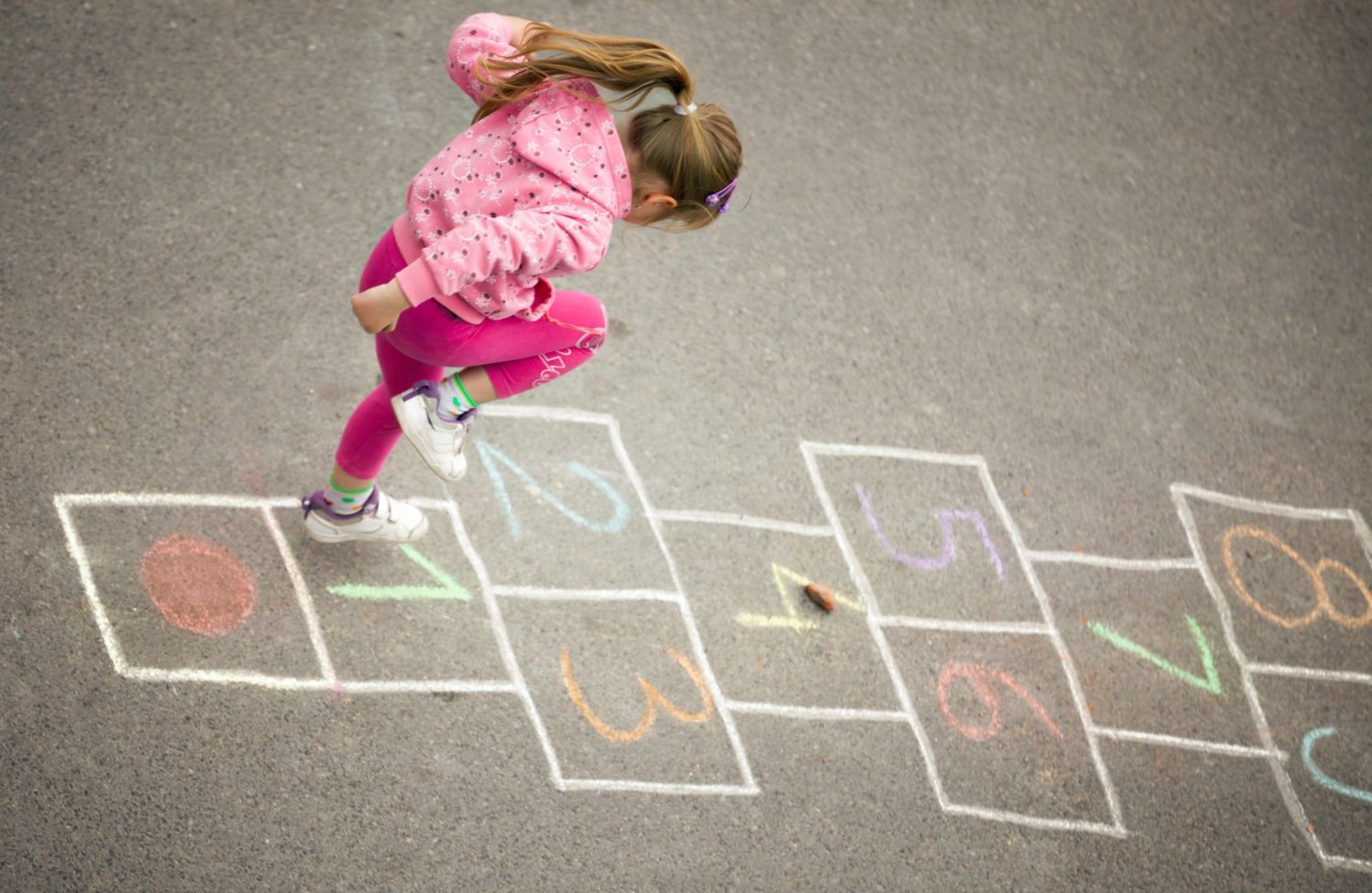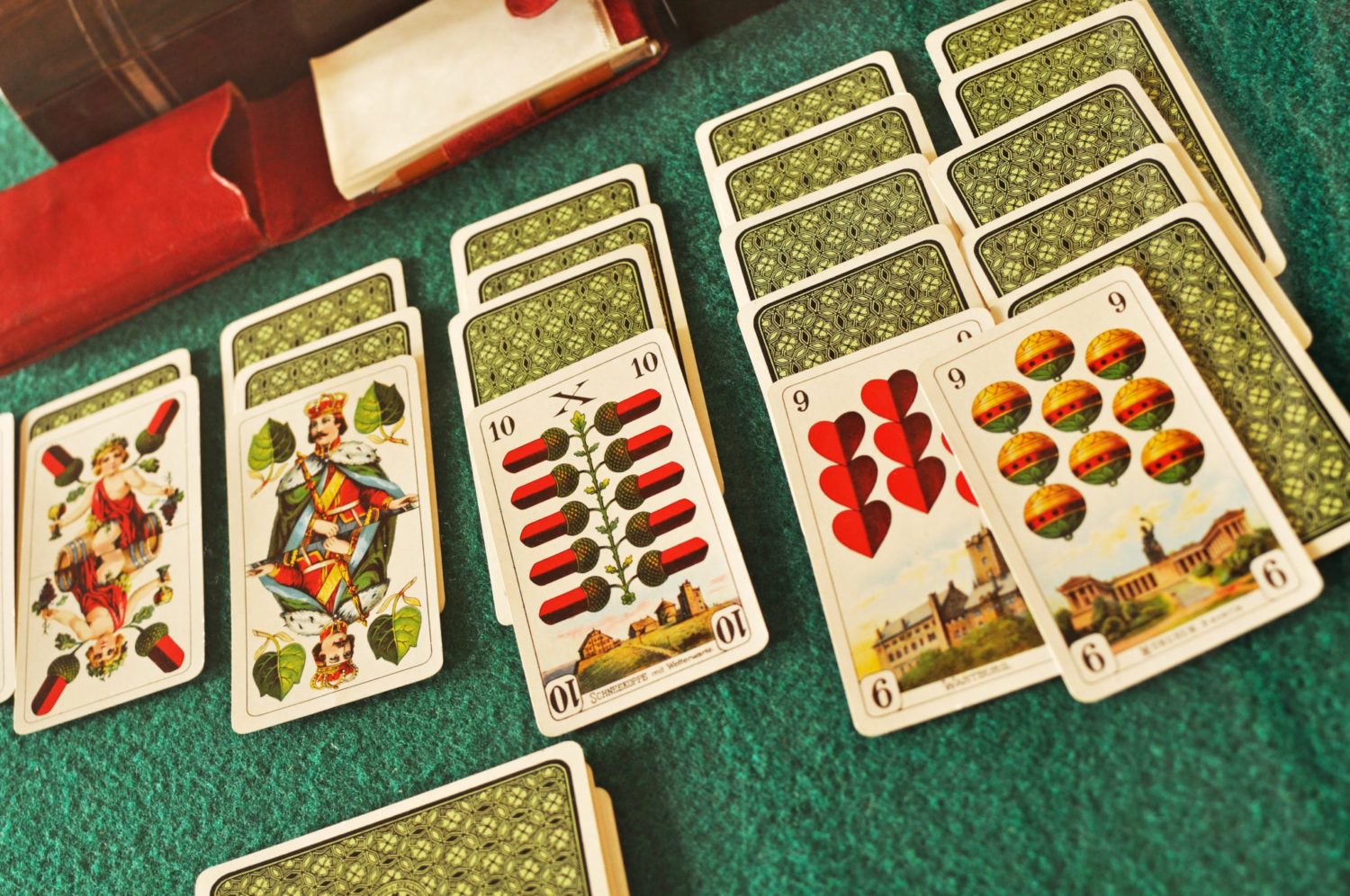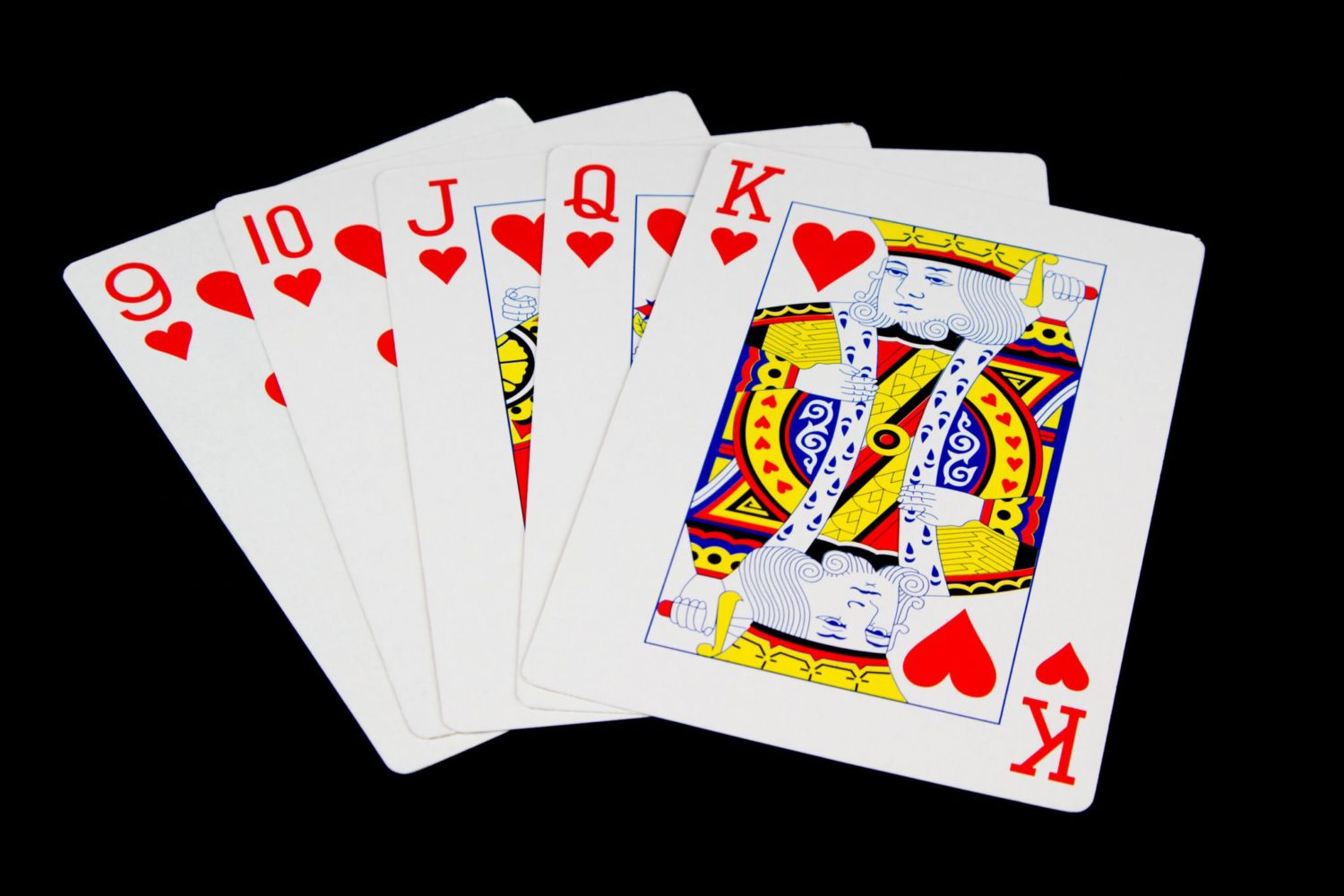How to Play Hopscotch | Guide to Hopscotch Rules & Instructions
What is hopscotch?
Hopscotch is a timeless outdoor childrens’ game where players hop and jump through a series of numbered squares and attempt to complete 10 full cycles before their opponents. Forms of hopscotch are played around the world at schools, on sidewalks, in driveways, and anywhere else with a flat surface. Hopscotch is a fun game that gets kids moving and involves a combination of skill, luck, agility, and coordination.
Hopscotch Objective
The goal of hopscotch is to be the first player to successfully hop and jump, roundrip, across the hopscotch board 10 times (1 for each number on the board).
Number of players
Two or more players. We like to play with 2-6 so that everyone is getting active turns to play. It can also be a single-player activity just for practice, not a game.
Age
Hopscotch is generally played by preschool and elementary-age kids. It’s a great game for anyone who is old enough to understand the rules, which is generally 3-years old and up.
What you Need
- Chalk: You’ll need chalk to draw the board outside, or tape or a mat to play inside. Note: You can also scratch the court into dirt with a stick or finger.
- Marker: Each player will be throwing a marker, such as a bottlecap, rock, coin, token, or other small object. Also called a “lagger” or “shooter.”
- Flat surface: Hopscotch is played on a flat surface, usually on asphalt or cement outside, although it can be played inside as well.
Skills
- Gross motor skills: Players use and improve whole body movement such as agility, balance, coordination, and hopping.
- Fine motor skills: Players use fine motor skills such as drawing the lines and numbers, as well as throwing and picking up the markers.
- Social skills: Players learn important social skills such as following rules, taking turns, and exercising good sportsmanship .
- Math: Hopscotch includes some sneaking math skills where players write and sequence numbers one through ten.
Why we like hopscotch for kids
There’s a reason hopscotch is popular for kids worldwide. Here’s what we love about it:
- Fun physical activity: Children get exercise and build both gross motor skills (whole body movement) and fine motor skills.
- Simple rules: The simple rules make it a great game for preschoolers and up.
- Luck: Throwing the marker and watching it bounce in or out of the targeted box keeps kids on their toes.
- Skill: Hopscotch is a game that players can get better at through practice.
How to play hopscotch in 7 simple steps
1: Gather 2 or more players and grab a piece of chalk and a marker for each player
All you need to play hopscotch is 2 or more players. We like to play with 2-6 players to keep the flow of the game moving where everyone still gets a turn without having to wait too long. To set up the game, you’ll need some chalk. Each player will also need a marker, sometimes called a shooter, that they’ll use to throw to start into one of the hopscotch boxes at the start of each turn. A good marker is a bottlecap, or an object of a similar size, such as a rock.
2: Draw the hopscotch game board
To draw a hopscotch board, use a piece of chalk to draw 10 boxes on a flat surface on the ground. The standard hopscotch board is 10 total numbered boxes. Each box should be roughly one square foot so that it’s big enough to fit players’ feet inside the boxes. The standard configuration for hopscotch is 10 ascending boxes as follows: 3 single boxes, 1 double box, 1 single box, 1 double box, and 2 single boxes (with the last spot being a single box, rectangle, or semi circle so there’s more room to turn around) as follows:
[10]
[ 9]
[ 7] [ 8]
[ 6]
[ 4] [ 5]
[ 3]
[ 2]
[ 1]
Many playgrounds will already have hopscotch courts painted on the asphalt. You can also play indoors using tape for lines (or on a mat), or in the dirt by scratching out the board with a stick.
3: Determine who goes first
There are many ways to decide who goes first, but our favorite way is to keep it fair, as follows. EVery player gets one turn to throw their marker onto the hopscotch board. Whoever lands inside the lines of the box with the highest number goes first. Players who land outside the box, including touching the line, are last. In case of a tie, the tying players to an additional tie-break round.
You can also use any other method, such as the youngest child going first, such as youngest to oldest, whoever drew the lines, whoever lined up first, etc.
4: Play the first turn
During a turn, a player continues to advance through multiple rounds as long as they are successful and their turn ends if they are unsuccessful, at which point they go to the back of the line.
During a turn, a player will:
- Toss the marker: The player tosses their marker and attempts to land it within the boundary of the number they’re on. To start the game, that will be number 1, then 2, 3, etc as they are successful with the previous number. If the marker lands anywhere except within the lines of the box of the number they’re on, their turn is over and they go to the back of the line.
- Hop across the board: The player must then hop on one foot across the board for single boxes and straddle the double boxes. The player must skip (hop over a single box, or, hop in the box next to a double box) the number where their marker lies. A player’s turn ends if they:
- Hop on, or outside, a line for the box they’re aiming for
- Touch two feet when they’re not supposed to
- Land in the box they’re supposed to skip
- Fall
- Turn and hop back: Once the player reaches the last number, which is often in the shape of a semicircle, they must turn around and hop back. On the way back, before they reach the box with their marker, they must bend down (usually on one foot) and pick up their marker, then hop over that spot and continue back to box number one. The same rules apply on the return hopping as the way out.
If the player is successful, they will continue with the next number by tossing their marker into the next sequential number, hopping across the board, and returning.
At any point if they are unsuccessful, they pick up their marker and go to the back on the line and will continue on the number where they left off (e.g. if they fail on number 3, they start on number 3.
5: Take turns
Players form a line. When a player is unsuccessful, they go to the back of the line and the person in the front of the line then starts their turn.
6: Repeat turn
When a player gets back to the front of the line after already playing a previous turn, they will resume play on the number for which they failed. For example, if they failed part way through number four, they’ll start on number four for this turn, but following the same process as before of throwing their marker, and hopping up and back on the board.
7: Continue until one player completes all 10 numbers and wins
Play continues until one player cycles through all of the numbers successfully, and that player is declared the winner.
Players can then start another game of hopscotch!
How to Play Hopscotch Video Tutorial
Hopscotch rules
Throwing your marker:
- You must throw the marker from behind the line of the first square (square number 1)
- The marker must land within the lines of the box. If it touches the line or goes outside the box, the turn is over.
- Landing your maker in an out of sequence box ends your turn.
Hopping
- You must land in a square with only one foot. That means hopping on one foot for single boxes, and straddling a double box.
- If you fall or touch the ground with a second foot, except when straddling a double box, your turn is over.
- Stepping on the line is considered being outside the box and ends your turn.
- Small, double hops within a box are permitted. Players often do this for balance or positioning.
- You must not hop (or step) on the box that contains your marker. For single boxes, that means hopping over it; for double boxes, that means hopping into only the unoccupied box next to it in the same row
- On the return, stop on the box before the one with your marker, bend down to pick up your marker, and hop over the box that had your marker.
Turns
- If you are successful in making it up and back on a given number, you move onto the next number and continue your turn
- If you are unsuccessful on a turn, your turn is over and start on same number on your next turn
Hopscotch variations | Hopscotch ideas
Rules variations
Here are some common rule variations to slightly alter the game:
- To make the game easier:
- Don’t use a marker; just take turns hopping on the board
- Allow double foot jumps to making balancing easier for younger players
- For a more challenging version of the game:
- Kick marker instead of throwing it
- Kick the marker instead of picking it up on the return with the goal of getting it across the start
- Only jump on odd numbers one direction, and even numbers on the return
- Hop backwards
- To reduce the wait time between turns, go immediately to the next player’s turn instead of letting the original player continue. The player will continue with the next number on their next turn.
- Try other patterns as outlined below
Number of numbers
The traditional hopscotch game is played with 10 squares, but a common variant is to use 8 boxes. The most common 8 box pattern looks like this:
[ 8]
[ 6] [ 7]
[ 5]
[ 3] [ 4]
[ 2]
[ 1]
Hopscotch patterns
Hopscotch can also be played with many different patterns of boxes. For example:
10 box patterns
The traditional hopscotch pattern is a 10 box pattern, that starts with three single boxes in a row, a double box, a single box, another double box, and then two single boxes, as follows:
[10]
[ 9]
[ 7] [ 8]
[ 6]
[ 4] [ 5]
[ 3]
[ 2]
[ 1]
Other configurations on the 10 pattern are possible. Here is one common variation:
[10]
[ 8] [ 9]
[ 7]
[ 5] [ 6]
[ 4]
[ 2] [ 3]
[ 1]
8 box patterns
[ 8]
[ 6] [ 7]
[ 5]
[ 3] [ 4]
[ 2]
[ 1]
Custom patterns
It’s also possible to add elements into the pattern, such as obstacles that everyone must jump over.
Spiral patterns
The French version of hopscotch, called “escargot” (for snail) or “Snail Hopscotch” in English-speaking countries, follows the same general rules but has the numbers in a spiral, usually from 10-12 boxes.
More variations
There are many offshoots to hopscotch that form new versions of the game, such as “kickout”
Hopscotch FAQs
What do you throw when you play hopscotch?
During a hopscotch game, players throw a “marker” during each turn, and is most commonly a bottle cap, rock, coin, or other small object. The marker is sometimes called a “lagger” or a “shooter.”
How do you draw hopscotch?
The traditional hopscotch board is made up of 10 numbered boxes, where numbers 1-3 are in a single line, 4 and 5 are a double box, 6 is a single box, 7 and 8 are a double box, and 9-10 are single boxes (often with the 10 as a semi-circle). The pattern looks as follows:
[10]
[ 9]
[ 7] [ 8]
[ 6]
[ 4] [ 5]
[ 3]
[ 2]
[ 1]
When drawing the boxes, they should all be big enough for players to fit a foot inside of it, with some additional spacing. A 1 foot square box is a good, rough size to aim for. Outdoors, lines are drawn with chalk, or scratched onto dirt (if a board isn’t already painted on the ground). Indoors, you can use masking tape to create the board, or purchase a mat.
What is the standard layout of a hopscotch?
The standard layout of hopscotch is 10 boxes, configured as follows: single (1), single (2), single (3), double (4-5), single (6), double (7-8), single (9), single (10), and looks like this:
[10]
[ 9]
[ 7] [ 8]
[ 6]
[ 4] [ 5]
[ 3]
[ 2]
[ 1]
How many numbers are in standard hopscotch?
The standard hopscotch board has 10 boxes, although 8 boxes are also commonly used, and there are other numbers and patterns as well.
What are the hopscotch rules with rock?
When a rock or other marker (e.g. bottlecap, coin, etc) is used during a hopscotch game, players toss the marker onto the board and target landing the marker within the box of the number of the round they’re on (e.g. box #1 in round 1, etc). When hopping out, they must hop over the rock; when hopping back, they must stop on the box before the one with the rock in it and bend over and pick up the rock before jumping over the rock box and continuing their return.
What are some games like hopscotch?
If you like hopscotch, you’ll also like these other outdoor games:
- Four square
- Tetherball
- Red Rover
- Tag
- Simon Says
- Red Light, Green Light
- Dodgeball
- Kickball
- Rounders
- Jump Rope
- Double Dutch
- Hide and Seek
- Capture the Flag
- Parachute



